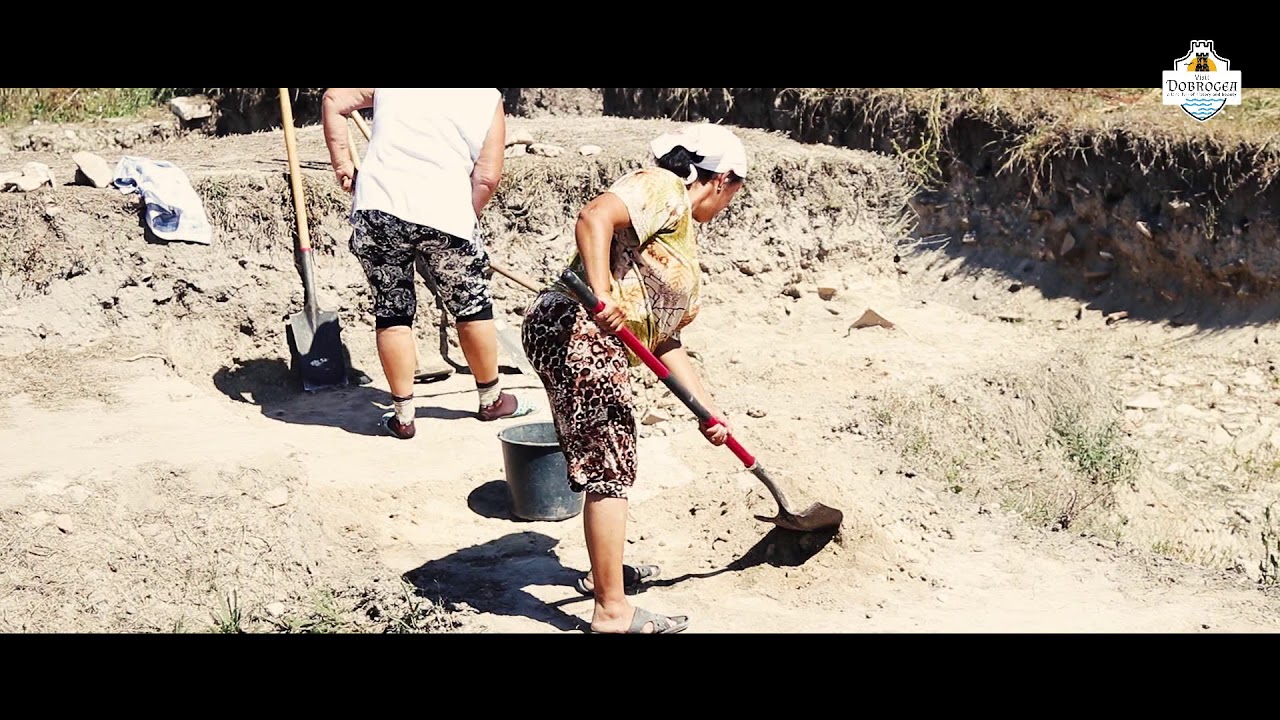La Histria (în prezent, Istria) am ajuns ca punct terminus al călătoriei noastre prin Constanța arheologică. Ar mai fi multe de văzut, și cu siguranță le vom mai vedea, dar, deocamdată, dacă la Adamclisi am văzut "actul de naștere al poporului român", la Histria vedem primele dovezi de locuire de pe actualul teritoriu românesc, precum și prima colonie milesiană de la Marea Neagră. Aici am văzut ruinele cetății Histria dar, înainte, am vizitat Muzeul de Arheologie, care ne-a plimbat prin milenii de istorie, înainte de a ne da drumul, liberi, să îi explorăm ruinele.
At Histria (currently Istria), we've reached the endpoint of our journey through archaeological Constanța. There's much more to see, and certainly, we'll see it, but if at Adamclisi we witnessed "the birth of the Romanian people," at Histria we see the first evidence of habitation on the current Romanian territory, as well as the first Milesian colony on the Black Sea. Here we saw the ruins of the Histria citadel, but before that, we visited the Archaeology Museum, which took us through millennia of history before setting us free to explore its ruins.
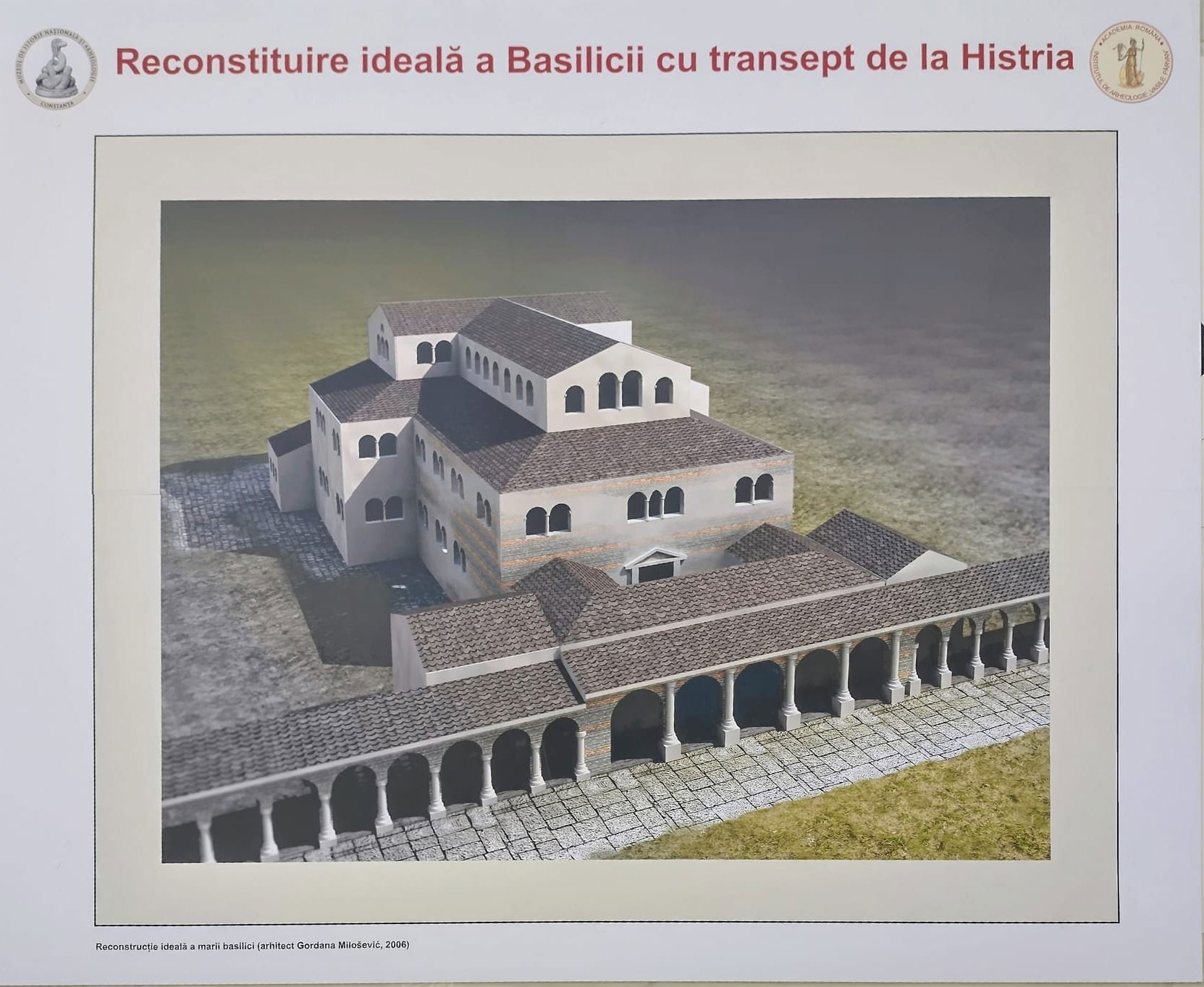
Reconstituire a cetății bizantine // Reconstitution of the byzantine citadel
1. Intrarea în muzeu ne duce pe un coridor cu obiecte neolitice găsite în zonă, cele mai vechi aparținând culturii Hamangia (cca. 4200-3700 î.e.n.).
1. The entrance to the museum leads us through a corridor with Neolithic objects found in the area, the oldest belonging to the Hamangia culture (approx. 4200-3700 BCE).

Menhir și ceramică neolitice // Neolithic menhir and ceramics
Continuăm apoi cu istoria elenistică a zonei; în secolul al VII-lea î.e.n., Histria a devenit colonie grecească și a continuat să funcționeze ca atare până în secolul I î.e.n.
We then continue with the Hellenistic history of the area; in the 7th century BCE, Histria became a Greek colony and continued to function as such until the 1st century BCE.
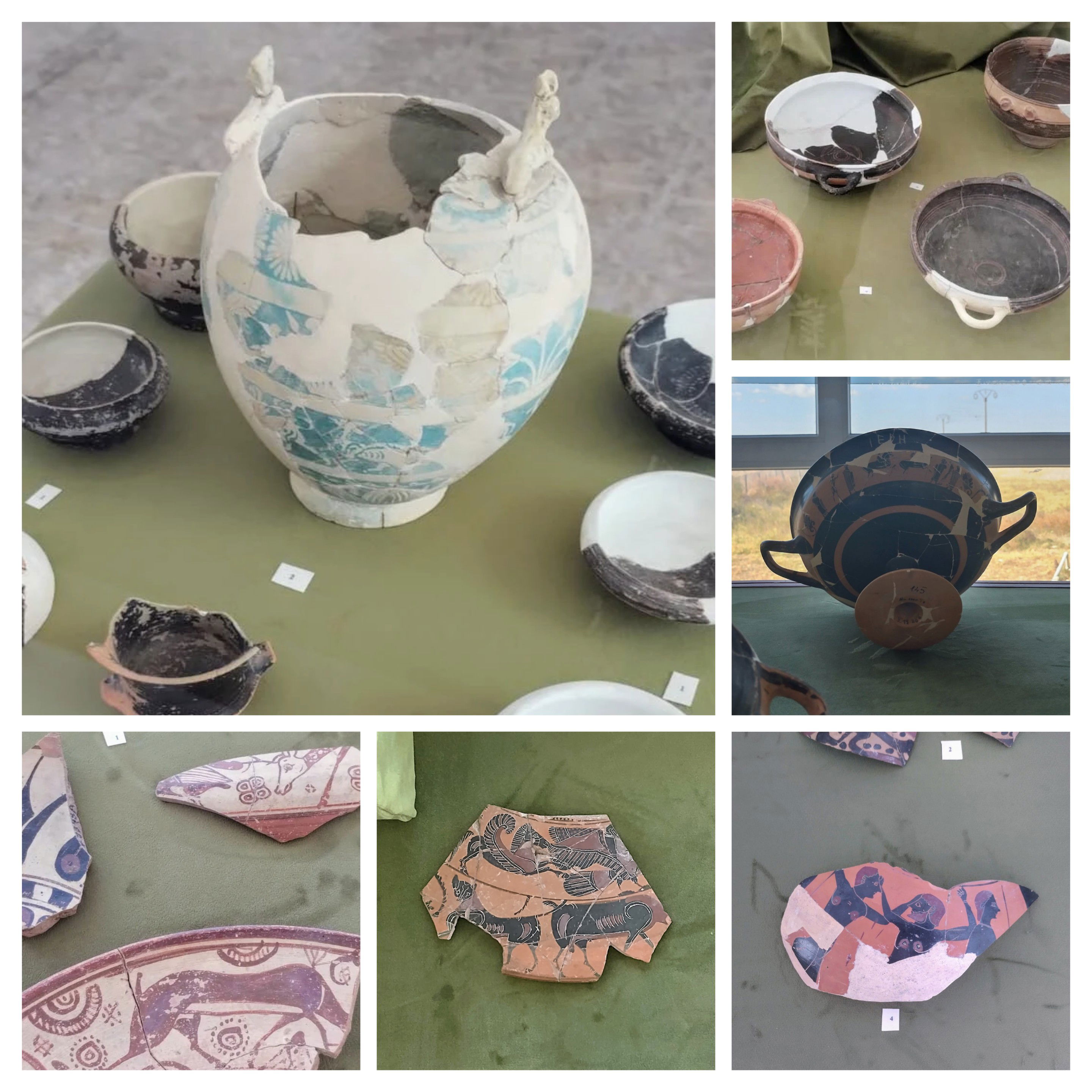
Ceramică elenistică // Helenistic ceramics

Ceramică elenistică și bizantină (stânga jos) // Helenistic and Byzantine ceramics (left down)

Statuetă elenistică // Helenistic statue

Elemente arhitectonice decorative elenistice (frize) // Hellenistic decorative architectonic elements (friezes)
STELĂ, stele, s. f. (În Antichitate) Mic monument comemorativ sau funerar, în formă de coloană sau de pilastru, alcătuit dintr-un singur bloc de piatră și purtând de obicei inscripții sau sculpturi. – Din fr. stèle.
STELA, stelae, f. n. (In Antiquity) A small commemorative or funerary monument, in the form of a column or pilaster, made of a single block of stone and usually bearing inscriptions or sculptures. – From Fr. stèle.
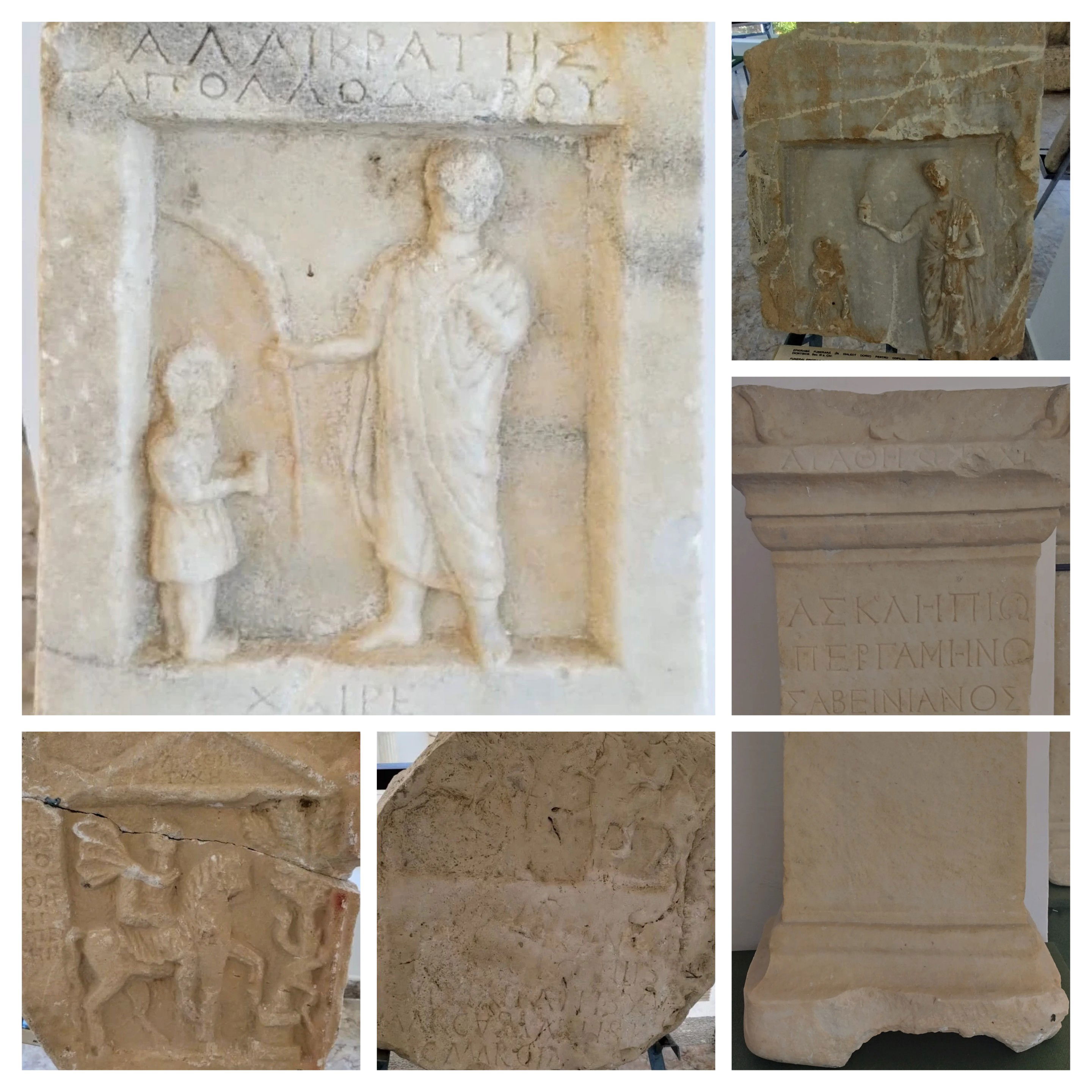
Stele funerare elenistice // Hellenistic funerary stelae
Urmează apoi integrarea în Imperiul Roman, ca punct strategic la Marea Neagră, perioadă de reconstrucție pentru cetate.
This is followed by integration into the Roman Empire, as a strategic point on the Black Sea, a period of reconstruction for the citadel.
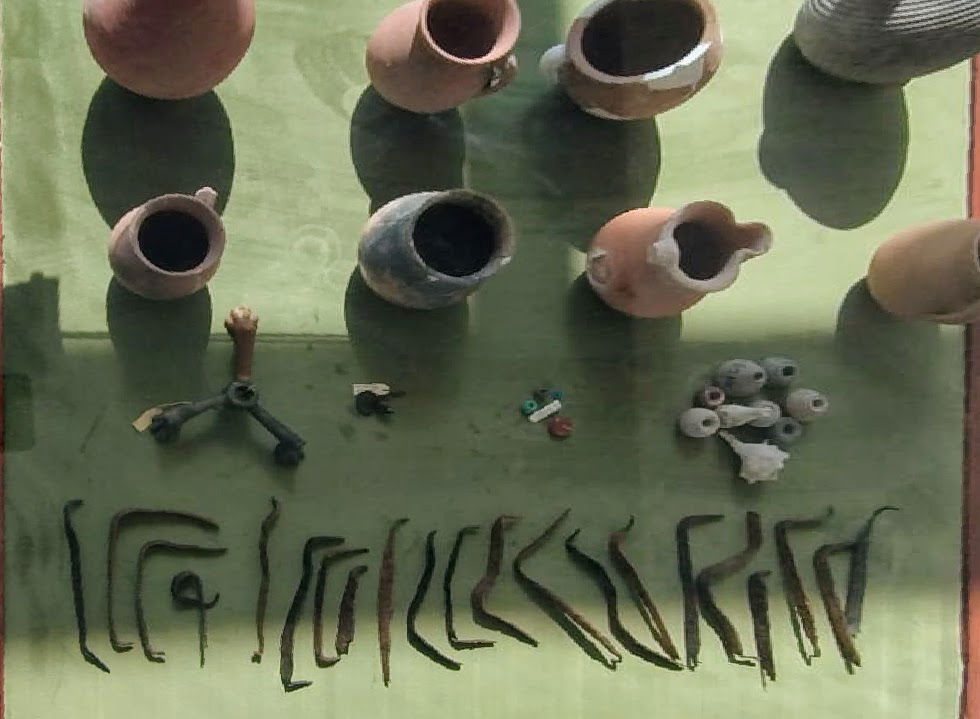
Ceramică romană // Roman ceramics

Mici obiecte romane // Small Roman objects

Statuetă romană (Hercules) // Roman statue (Hercules)

Tehnică romană: țevi, mozaic, coșuri // Roman technique: pipes, mosaic, chimneys

Basoreliefuri romane // Roman bas-reliefs

Dedicații romane // Roman dedications
După declinul Imperiului Roman, urmează perioada bizantină, marcată de multiple invazii ale popoarelor migratoare, slavilor și bulgarilor.
After the decline of the Roman Empire, the Byzantine period follows, marked by multiple invasions by migrating peoples, the Slavs, and the Bulgarians.

Inscripție în cinstea victoriei lui Mihai Viteazu asupra turcilor; obiecte bizantine // Inscription in honor of Michael the Brave's victory over the Turks; Byzantine objects
Zona sacră s-a dezvoltat în timp ca răspuns la schimbările culturale, religioase și istorice. Inițial stabilită în timpul colonizării grecești, a inclus temple dedicate divinităților grecești și altare pentru ofrande sacrificiale. Odată cu cucerirea romană, zona sacră a integrat probabil temple în stil roman. În timpul erei bizantine, răspândirea creștinismului a condus la construcția basilicilor creștine, marcând o tranziție de la cultul păgân la cel creștin. După abandonarea Histriei în secolul al XI-lea, zona sacră a căzut în desuetudine, fiind redescoperită și studiată de arheologi în timpurile mai recente.
The sacred area evolved over time in response to cultural, religious, and historical changes. Initially established during Greek colonization, it included temples dedicated to Greek deities and altars for sacrificial offerings. With the Roman conquest, the sacred area likely integrated Roman-style temples. During the Byzantine era, the spread of Christianity led to the construction of Christian basilicas, marking a transition from pagan to Christian worship. After Histria's abandonment in the 11th century, the sacred area fell into disuse, only to be rediscovered and studied by archaeologists in more recent times.

Templul Marelui Zeu și obiecte din zona sacră // The Temple of the Great God and objects from the sacred area
2. În secolul XI e.n., cetatea a fost abandonată definitiv, lăsând în urma sa ruinele pe care le vedem astăzi.
2. In the 11th century CE, the citadel was definitively abandoned, leaving behind the ruins we see today.

Vestigii grecești marchează cărarea către cetate // Greek remnants mark the path to the citadel

Zidurile incintei - veacuri de istorie // The walls of the fortress - centuries of history
După cum veți putea vedea, mai jos, în clipul cu ghid, incintele nu sunt ușor de distins pentru un necunoscător. Astfel, deși nu garantez pentru acuratețe, și doar pentru a oferi o ancoră în limba engleză (căci, din nefericire, acest clip nu este disponibil dublat sau subtitrat în engleză), voi încerca să fac perechi între panourile descriptive și pozele pe care le am.
As you will see below, in the guided video, the fortifications are not easy to distinguish for a layperson. Therefore, although I do not guarantee accuracy, and only as to provide an anchor in English (because, unfortunately, this clip is not available dubbed or subtitled in English), I will try to pair the descriptive panels with the pictures I have.



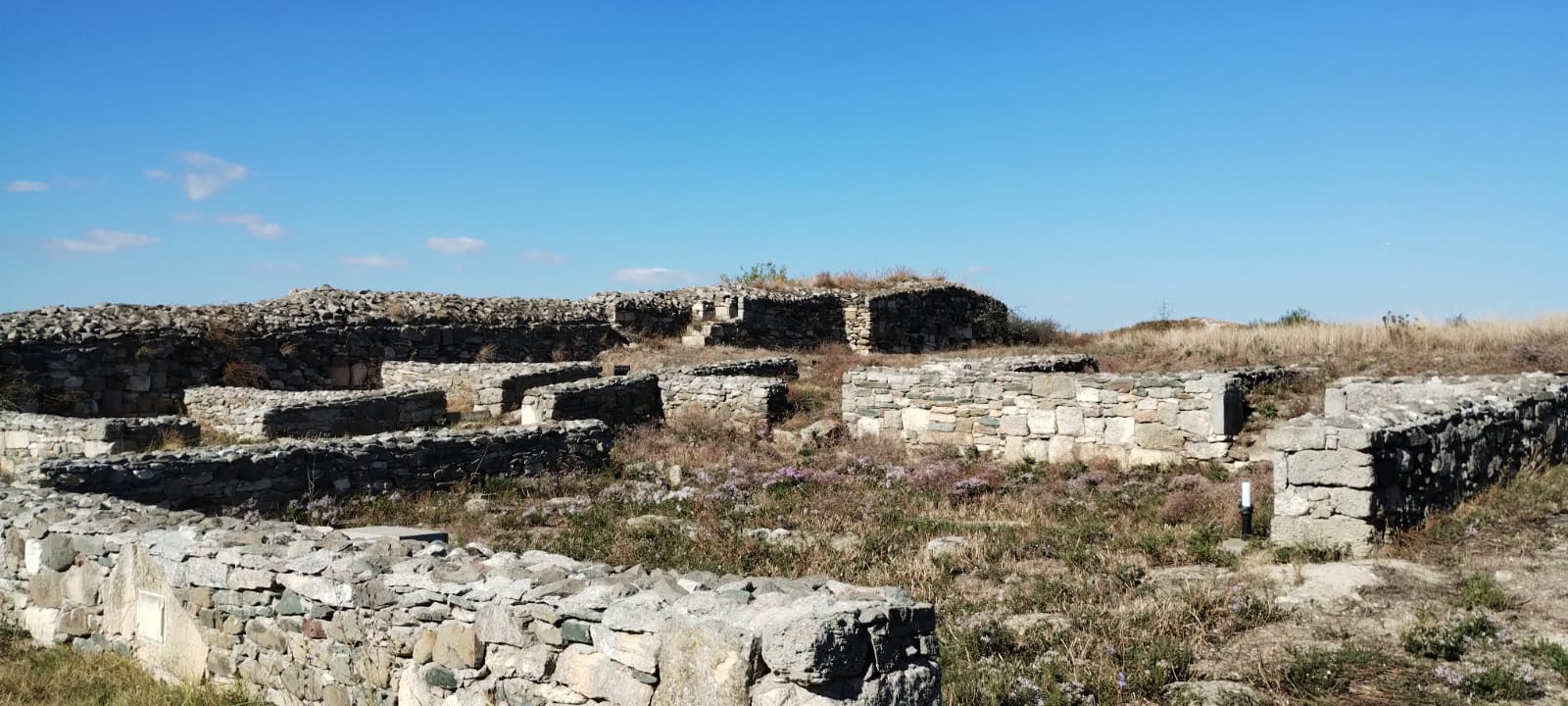



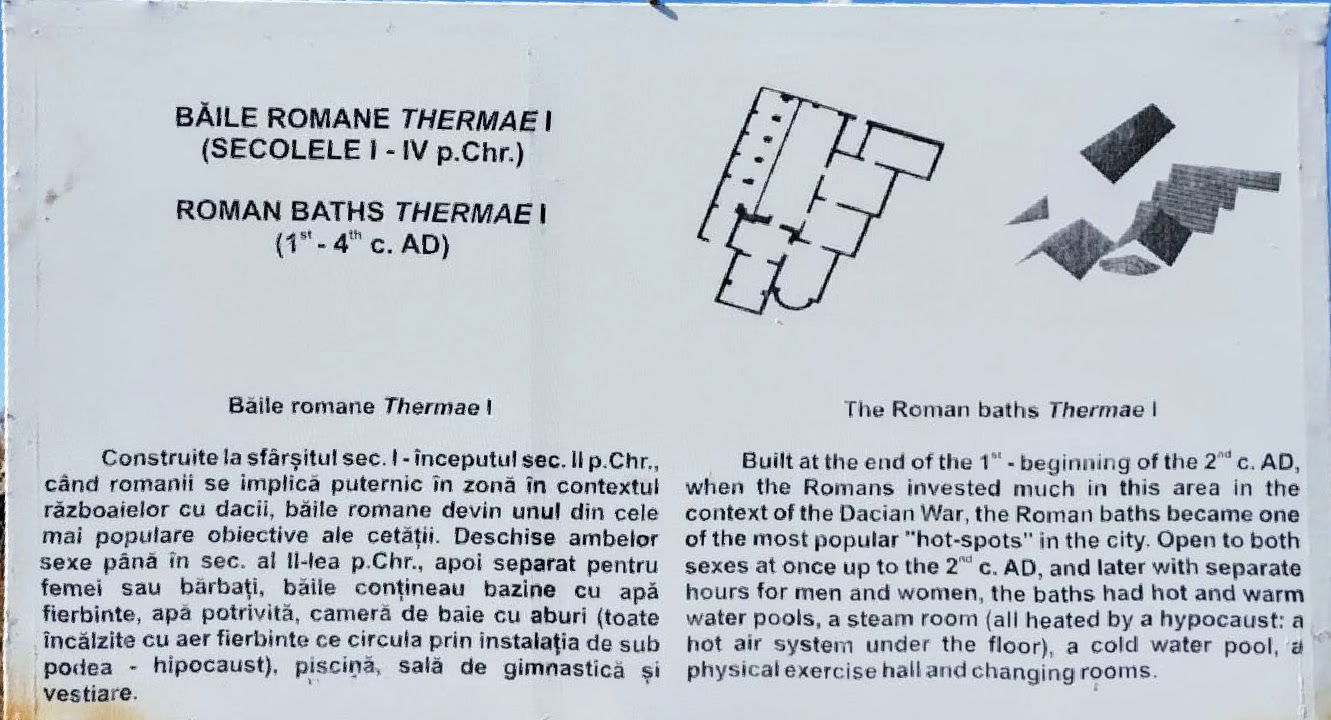


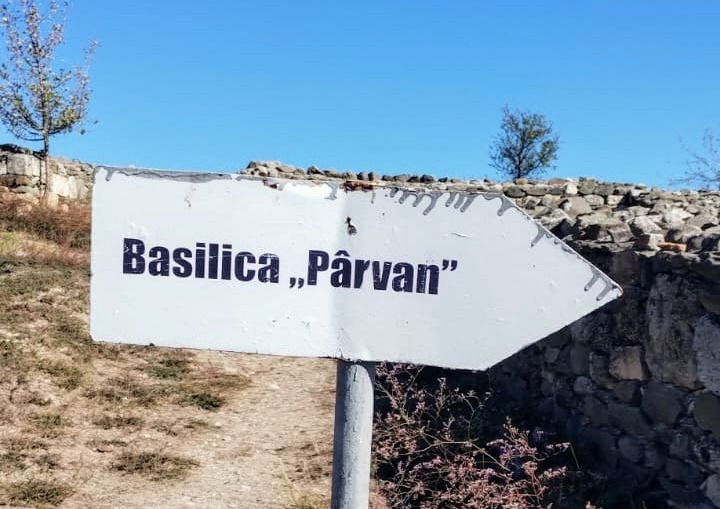


Pe drumul de întoarcere către ieșirea din complex am mai trecut și pe la Thermae II, din care nu a mai rămas foarte mult de fotografiat. Dar, din vegetația de toamnă din jur, se disting plante înflorite, care ne răpesc atenția pe moment.
On the way back to the exit from the complex, we also passed by Thermae II, of which there was not much left to photograph. But, from the autumn vegetation around, blooming plants stand out, which capture our attention for the moment.
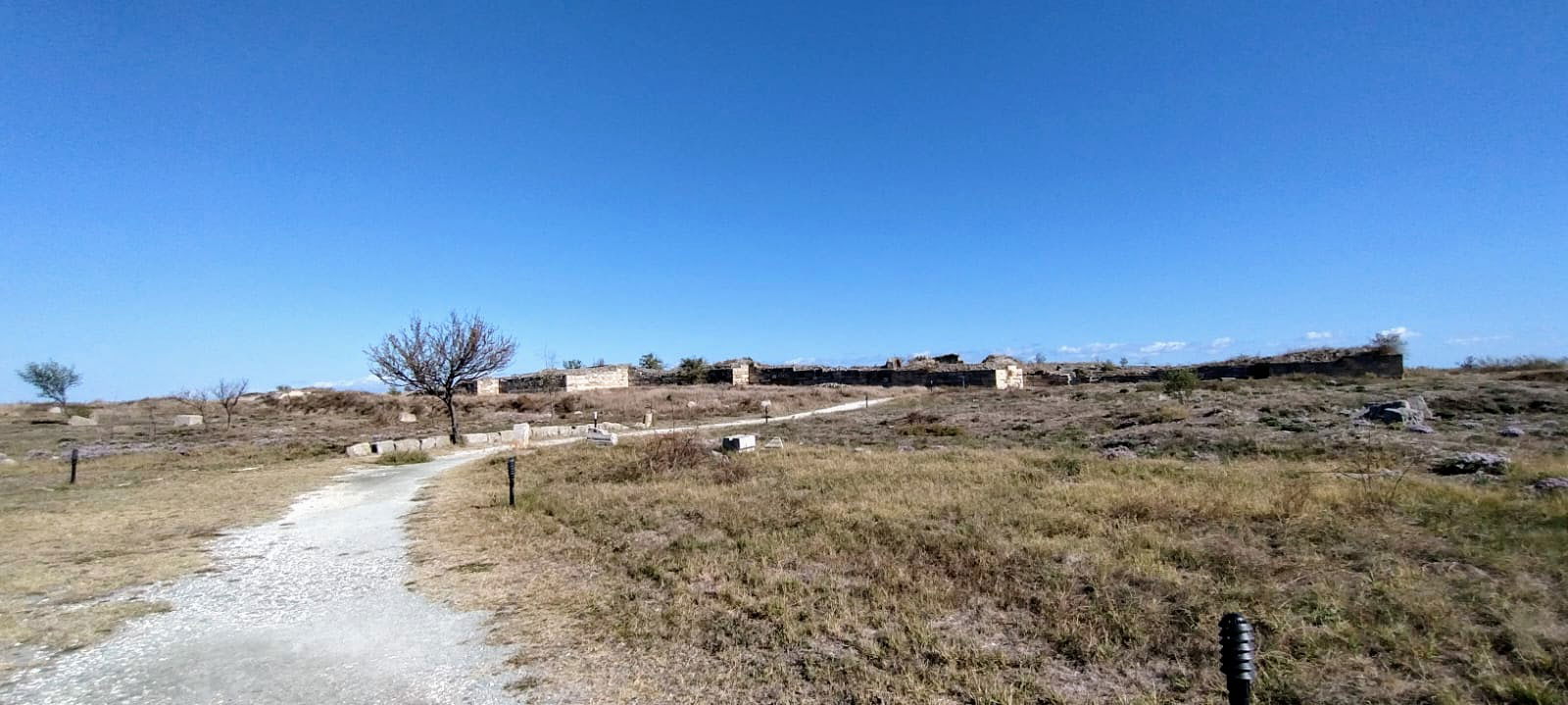
Drumul către Thermae II // The walkway to Thermae II

Steluța de toamnă (Symphyotrichum dumosum) și Steluța de stânjenel (Galatella sedifolia) // Bushy aster (Symphyotrichum dumosum) and Aster sedifolius (Galatella sedifolia)
Ne oprim aici cu vizitarea (fizică) a cetății și urmărim turul virtual (via minac.ro).
We stop here with the (physical) visitation of the citadel and we follow the virtual tour (via minac.ro).
3. Înapoi în localitatea Istria, am vizitat Biserica Îngropată "Sfânta Treime". Aceasta este "îngropată" pentru că, în perioada dominației otomane (musulmane) în zonă, nu avea voie să fie mai înaltă decât casele satului și nu avea voie să aibă turle și clopotniță, pentru a se deosebi de geamia (moscheea) locală. Astfel, temelia sa este scăzută cu un metru, fiind singura biserică ortodoxă de pe teritoriul românesc în care se coboară. Pentru a îmbunătăți acustica, în lipsa turlei, în pereți au fost introduse 53 de amfore. Aici este găzduit și un mic muzeu de obiecte bisericești, protejate însă, cu cheie și curator, de obiectivul aparatului foto.
3. Back in the town of Istria, we visited the Buried Church "Holy Trinity." This church is "buried" because, during the Ottoman (Muslim) domination in the area, it was not allowed to be taller than the village houses, and it was not allowed to have a steeple and bell tower, in order to differentiate it from the local mosque. Thus, its foundation is lowered by one meter, being the only Orthodox church in Romanian territory where one descends. To improve the acoustics, in the absence of a steeple, 53 amphorae were inserted into the walls. Here is also housed a small museum of church objects, protected, however, with a key and curator, from the lens of the camera.

Poarta (nouă) cu clopotniță // The (new) gate with bell tower

Biserica, intrarea și hramul "Sfântul Nicolae", cum mai este cunoscută // The Church, entrance, and dedication to "Saint Nicholas," as it is also known
De-aici am continuat spre Corbu, unde eram cazați1. A fost o zi minunată la Istria, și tot n-am apucat să vedem chiar totul pe îndelete. E de revenit pentru lacurile din zonă, mai la vară.
1. https://tinyurl.com/ysvaebbj
From here, we continued to Corbu, where we were staying1. It was a wonderful day in Istria, and we still didn't manage to see everything in detail. We'll have to come back for the lakes in the area, maybe in the summer.
1. https://tinyurl.com/ysvaebbj

- Cost: 10 RON intrarea la muzeul arheologic + 10 RON intrarea la ruine + 10 RON donație la muzeul de arte bisericești
- Durată: 5 ore, din care 2 ore la muzeul arheologic, respectiv la ruine, și o oră la biserica îngropată
- Verdict: 9/10 - merită mult!
- Cost: 10 RON entry to the archaeological museum + 10 RON entry to the ruins + 10 RON donation to the church art museum
- Duration: 5 hours, of which 2 hours at the archaeological museum and ruins respectively, and one hour at the buried church
- Verdict: 9/10 - worth it a lot!
